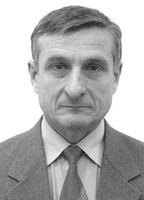Lactate dynamics in elite weightlifters during eight weeks of training
Фотографии:
ˑ:
Teoriya i praktika fizicheskoy kultury №1 2017
UDC 796.01:612
Dr.Hab. I.P. Sivokhin1
Professor, PhD V.F. Skotnikov2
M. Tapsir3
Master, doctoral student O.Y. Komarov4
Associate Professor, PhD B.M. Utegenova1
Associate Professor, PhD A.I. Fedorov5
1Kostanay State Pedagogical Institute, Kostanay, Kazakhstan
2Russian State University of Physical Culture, Sport, Youth and Tourism, Moscow
3Management of the national teams, Astana, Kazakhstan
4Kazakh Academy of Sports and Tourism, Almaty, Kazakhstan
5South Ural State University, Chelyabinsk
Objective of the study was to analyze the lactate concentration dynamics in elite weightlifters during an eight-week training cycle. Five (n=5) elite weightlifters bearing the title of Candidate for Master of Sports were subject to the study. Special equipment of the Accutrend PlusandCobas brand (Germany) was used to determine lactate concentration in peripheral blood. The said equipment allows to assess the required values within a minute in the gym environment. Lactate values were measured in millimoles per liter of blood. The blood test was carried out immediately after a workout. The study was conducted during 6 microcycles, each being a week long. The study showed that biochemical control of the lactate dynamics is a sensitive indicator of the athletes’ bodies’ reaction to the training load and can be used to control the training process in weightlifting. The study provided new information about the processes that occur in the bodies of athletes impacted by the training load of speed and power type. Such data provide an opportunity to assess various components of the training load and ensure further improvement of various models of the training process.
Keywords: biochemical analysis, lactic acid, dynamics, athletes, training cycle.
References
- Korzhenevskiy A.N., et al (2012). Kompleksnaya diagnostika podgotovlennosti vysoko-kvalifitsirovannykh tyazheloatletov (Complex diagnostics of fitness of elite weightlifters). Teoriya i praktika fiz. kultury,12,26-32.
- Seluyanov V.N. (2001). Podgotovka beguna na srednie distantsii (Training of middle-distance runner). – Moscow: SportAkademPress, 104.
- Sivokhin I.P. (2009). Analiz effektivnosti trenirovochnogo protsessa v godichnom tsikle podgotovki tyazheloatletov natsional'noy sbornoy RK (Analysis of training process efficiency in annual training cycle of national weightlifting team of Kazakhstan). Teoriya i metodika fizicheskoy kultury, 1, 155-164.
- Sivokhin I.P., Ageev O.V., Orekhov L.I., Khlystov M.S., Ni A.G. (2012). Izmenenie laktata na trenirovochnuyu nagruzku v mikrotsikle podgotovki tyazheloatletov (Changes in lactate under training load in training microcycle of weightlifters). Teoriya i metodika fizicheskoy kultury: Scientific-theoretical journal, Almaty, 2 (29), 68-73.
- Jansen P. (2006). ChSS, laktat i trenirovki na vynoslivost' (Heart rate, lactate and endurance training: Transl. from Engl.) Murmansk: Tuloma, 160.
- Buss O.T., Hakkinen K., Komi P.V. et al. (1992). Hormonal adaptations and modeled responses in elite weightlifters during 6 weeks of training. European Journal of Applied Physiology, 381–386.
- Freund H., Zoulowwmian P., et al. (1992). Lactate kinetics after maximal exercise in man. Medicine of Sports Sciense, 17, 9-24.
- Hakkinen К., Kauhanen H., Kuoppala Т.К. (1987). Neural, muscular and hormonal adaptations, changes in muscle strength and weightlifting results with respect to variations in training during one year follow-up period of Finnish elite weightlifters. World weightlifting, Scientific supplement, 3, 2-5.
- Hakkinen K., Komi, P.V., Kauhanen H. (1986). Electromyographic and force production characteristics of leg extensor muscles of elite weightlifters during isometric, concentric and various stretch-shortening cycle exercises. International Journal of Sports Medicine, 7, 3, 144–151.
- Komi P.V., Hakkinen K. (1989). Strength and power. Proceedings of the weightlifting symposium. Siofok, Hungary, 159-175.



 Журнал "THEORY AND PRACTICE
Журнал "THEORY AND PRACTICE